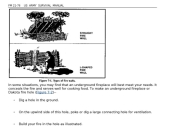
 6
6




My books, movies, videos, podcasts, events ... the big collection of paul wheaton stuff!
 2
2




magnet thing: https://www.amazon.com/dp/B000RB3XBA?tag=rs12-20
 1
1




[img]http://i109.photobucket.com/albums/n52/havlik1/permie%20pics2/permiepotrait3pdd.jpg[/img]
"One cannot help an involuntary process. The point is not to disturb it. - Dr. Michel Odent
 2
2




 2
2




My books, movies, videos, podcasts, events ... the big collection of paul wheaton stuff!
 2
2




My books, movies, videos, podcasts, events ... the big collection of paul wheaton stuff!
 2
2




Principal - Terra Phoenix Design
http://TerraPhoenixDesign.com
 4
4




My books, movies, videos, podcasts, events ... the big collection of paul wheaton stuff!
 4
4




My Blog, Natural History and Forest Gardening
www.dzonoquaswhistle.blogspot.com
"Listen everybody, to what I gotta say, there's hope for tomorrow, if we wake up today!" Ted Nugent
"Suck Marrow" Henry D Thoreau
 3
3




Brenda
Bloom where you are planted.
http://restfultrailsfoodforestgarden.blogspot.com/
 4
4




Seed the Mind, Harvest Ideas.
http://farmwhisperer.com
 5
5





 2
2




Seed the Mind, Harvest Ideas.
http://farmwhisperer.com
 2
2




 3
3




 1
1




 3
3




"the qualities of these bacteria, like the heat of the sun, electricity, or the qualities of metals, are part of the storehouse of knowledge of all men. They are manifestations of the laws of nature, free to all men and reserved exclusively to none." SCOTUS, Funk Bros. Seed Co. v. Kale Inoculant Co.
 1
1




My books, movies, videos, podcasts, events ... the big collection of paul wheaton stuff!
 1
1




"the qualities of these bacteria, like the heat of the sun, electricity, or the qualities of metals, are part of the storehouse of knowledge of all men. They are manifestations of the laws of nature, free to all men and reserved exclusively to none." SCOTUS, Funk Bros. Seed Co. v. Kale Inoculant Co.
 1
1




 1
1




My books, movies, videos, podcasts, events ... the big collection of paul wheaton stuff!
 1
1




 3
3








Whereabouts in your arm? I have a very effective tensing exercise that may help you.Feral wrote:
I developed tendonitis in my arm




 1
1




 1
1








Jonathan Byron wrote:
It's a good source of potassium - add it to the soil, compost, etc.
Mixing it with water forms lye (potassium hydroxide) - can burn plants or skin if too concentrated.
Traditionally used to make lye for soap.
 3
3




OK. You will have to excuse my poor writing skills.Feral wrote:
Right forearm, just below my elbow. Hit me right in the middle of getting my firewood in. I hear that using a chainsaw is one of the more common causes. Anything that helps is really appreciated!




We live in Nashville, Tennessee, USA
www.permavations.com




If you get too far from the stone age .. things go haywire.




Idle dreamer








If you get too far from the stone age .. things go haywire.




Something like that. I'll use the lower back as an example because back ache is probably the most common joint problem that some many us here have no doubt experienced.DustyTrails wrote:
Warren are you referring to .. "muscles have memory" and they will not heal until relaxed or exercised. My buddy that is a Masus told me about this and I never understood all the in's and out's of the subject.




If you get too far from the stone age .. things go haywire.









 1
1











